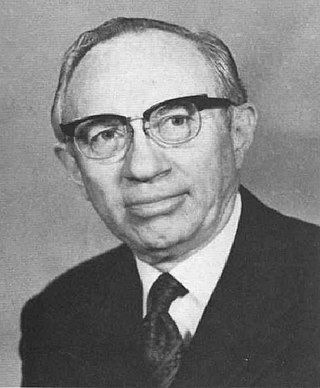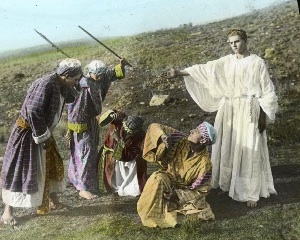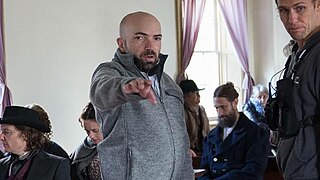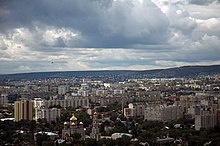
Gordon Bitner Hinckley was an American religious leader and author who served as the 15th president of the Church of Jesus Christ of Latter-day Saints from March 1995 until his death in January 2008 at age 97. Considered a prophet, seer, and revelator by church members, Hinckley was the oldest person to preside over the church in its history until Russell M. Nelson surpassed his age in 2022.

Missionary Training Centers (MTC) are centers devoted to training missionaries for the Church of Jesus Christ of Latter-day Saints. The flagship MTC is located in Provo, Utah, adjacent to the campus of Brigham Young University (BYU), a private university owned and operated by the church.

Mormon cinema usually refers to films with themes relevant to members of the Church of Jesus Christ of Latter-day Saints. The term has also been used to refer to films that do not necessarily reflect Mormon themes but have been made by Mormon filmmakers. Films within the realm of Mormon cinema may be distinguished from institutional films produced by the LDS Church, such as Legacy and Testaments, which are made for instructional or proselyting purposes and are non-commercial. Mormon cinema is produced mainly for the purposes of entertainment and potential financial success.

Missionaries of the Church of Jesus Christ of Latter-day Saints —widely known as Mormon missionaries—are volunteer representatives of the church who engage variously in proselytizing, church service, humanitarian aid, and community service. Missionaries of the LDS Church may be male or female and may serve on a full- or part-time basis, depending on the assignment. Missionaries are organized geographically into missions, which could be any one of the 411 missions organized worldwide. This is one of the practices that the LDS Church is well-known for.
Corbin Michael Allred is an American actor. He starred in the 2003 award-winning motion picture Saints and Soldiers and the 1997–1998 television series Teen Angel.

The basic beliefs and traditions of the Church of Jesus Christ of Latter-day Saints have a cultural impact that distinguishes church members, practices and activities. The culture is geographically concentrated in the Mormon Corridor in the United States, and is present to a lesser extent in many places of the world where Latter-day Saints live.

The Church of Jesus Christ of Latter-day Saints was established in the Hawaiian Islands in 1850, 11 years after the Edict of Toleration was decreed by Kamehameha III, giving the underground Hawaii Catholic Church the right to worship, and at the same time allowing other faith traditions to begin establishing themselves.
George Wendell Pace was an American professor of religion at Brigham Young University (BYU) in Provo, Utah. He was a popular writer and speaker on religion in The Church of Jesus Christ of Latter-day Saints and part of a public criticism voiced by Apostle Bruce R. McConkie in 1982.
James Brown Allen is an American historian of Mormonism and was an official Assistant Church Historian of the Church of Jesus Christ of Latter-day Saints from 1972 to 1979. While working as Assistant Church Historian, he co-authored The Story of the Latter-day Saints with Glen Leonard. After Ezra Taft Benson dismissed the book as secular new history, other events led to the dissolution of the LDS Church History department in 1982. Allen resigned as Assistant Church Historian in 1979, returning to work at Brigham Young University (BYU) full-time.

The Church of Jesus Christ of Latter-day Saints has had a presence in Mexico since 1874. Mexico has the largest body of LDS Church members outside of the United States. Membership grew nearly 15% between 2011 and 2021. In the 2010 Mexican census, 314,932 individuals self-identified most closely to the LDS Church.
Mark L. Grover is an American expert on Mormonism in Brazil and an author on religion in Latin America.
The Religious Studies Center (RSC) at Brigham Young University (BYU) sponsors and publishes scholarship on the culture, history, scripture, and doctrine of the Church of Jesus Christ of Latter-day Saints.

The Church of Jesus Christ of Latter-day Saints in England refers to the Church of Jesus Christ of Latter-day Saints and its members in England. England has five missions, and both temples in the United Kingdom. With 145,385 members in 2011, England had more LDS Church members than any other country in Europe.

The Church of Jesus Christ of Latter-day Saints had a presence in Russia before the rise of the USSR, with the first baptisms occurring in 1895. Preliminary missionary efforts began before the dissolution of the Soviet Union, and the Russian government officially recognized the church in 1991. Membership increased in the 1990s and early 2000s. Missionary efforts were impacted by the 2016 Yarovaya law, which prohibited proselytizing outside of official church property. Current membership statistics are not available for Russia, but the church reported 19,946 members in 2009. As of February 2023, there were three stakes and three missions in Russia. In 2018, Russell M. Nelson announced that a temple would be constructed in a major city in Russia.

The Saratov Approach is a 2013 American dramatic thriller film written and directed by Garrett Batty. It depicts the 1998 kidnapping of two missionaries of the Church of Jesus Christ of Latter-day Saints in Saratov, Russia. It began a limited release on October 9, 2013, solely in Utah. Subsequently, the film was released throughout the Mormon Corridor. On January 10, 2014, the film began an expanded limited release throughout the United States.
Mormon abuse cases are cases of confirmed and alleged abuse, including child sexual abuse, by churches in the Latter Day Saint movement and its agents.

Kate Holbrook was an American historian and writer. She worked as the managing historian of women's history in the Church History Department (CHD) of the Church of Jesus Christ of Latter-day Saints.

Garrett Batty is an American film director, writer, and producer known for his film The Saratov Approach. He is a graduate of Brigham Young University and a native of Park City, Utah. He is a member of the Church of Jesus Christ of Latter-day Saints, and his films are part of Mormon cinema, but with a more general audience. He has written, directed, and produced four full-length films, including Freetown (2015) and Out of Liberty (2019), and will begin work on a fifth in 2020. For Freetown, he was awarded the 2015 Ghana Movie Award for Best Screenplay alongside Melissa Leilani Larson.












